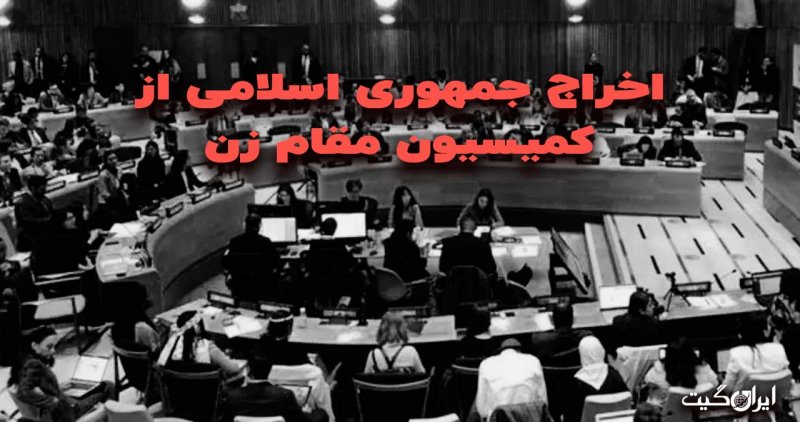Expulsion of the Islamic Republic from the Commission on the Status of Women
According to Iran Gate, the United Nations Economic and Social Council on Wednesday voted with a majority to expel the Islamic Republic of Iran from the Commission on the Status of Women. The UN Commission on the Status of Women is the main global body for defending women’s rights and eliminating discrimination, operating as a subsidiary of the UN Economic and Social Council.
Iran was elected as a member of this body last year. The membership term in the UN Commission on the Status of Women is four years, and this council has 55 members. Following recent protests, the United States drafted a resolution to expel Iran from the Commission on the Status of Women, which was put to a vote on Wednesday. During this session, Russia attempted to prevent the vote and Iran’s expulsion but was stopped by the majority vote of the members. However, in addition to Russia, representatives of China, Venezuela, Syria, and Pakistan spoke against Iran’s expulsion.
Mahsa: The Code Name for Iranian Women
Three months ago, after the killing of Mahsa Amini by the morality police, few could have imagined that this tragic event would spark a progressive and demanding movement for ‘Woman, Life, Freedom.’ Mahsa was not the first victim of the regime’s oppression of Iranian women’s rights, but she was undoubtedly the most significant. Her tragic death unveiled the pent-up anger and smoldering fire of nearly half a century, laying the foundation for a large, progressive, and widespread movement with the beautiful slogan ‘Woman, Life, Freedom.’
Undoubtedly, Iranian society, especially women, is divided into two parts: before the movement and post-Mahsa, which, according to many socio-political activists, will not return to the pre-Mahsa era.
Reactions to the Post-Mahsa Era
In a note titled ‘A Strand of Hair,’ Mohsen Renani states that today, without hesitation, one can say this regime is failing because it never had a theory of failure. What has happened in Iran’s streets today, according to experts, is a major shock to a government that perhaps did not expect its rivals to be young students and schoolchildren, shaking the foundations of the regime.
The death of Mahsa Amini ignited the people’s expectations from the government. Now, the power of the regime cannot confront the fallen headscarves, and in a way, Iran has entered a period of optional hijab. The number of people who have taken off their headscarves and thrown them into the fire exceeds the regime’s and society’s expectations.
It seems that what is happening on the streets today is the beginning of the Renaissance that researchers had promised. In March 2019, Mohsen Renani said that the Renaissance happening in Iran would be greater and better than the European Renaissance. He stated that the European Renaissance was the separation of religion from politics, but in Iran’s Renaissance, the separation of faith from religious law has occurred, which is far ahead of European secularism.
Vahid Ashtari, a principled justice-seeking activist, wrote on Twitter that the era of mandatory hijab is almost over, and we are in the post-Mahsa era. Do not be fooled by superficial analysts who claim a great victory and emerging triumph from a new sedition. ‘Woman, Life, Freedom’ has achieved its goals.
Anger Replaces Fear
One of the most significant features of this round of protests is the collapse of fear of seeing security forces and special units. In past protests, a few officers could sometimes push back large groups of protesters, but social media images and eyewitness reports show that teenagers and young people are not afraid of the officers and stand up to them.
In many videos, it has been seen that special forces have been forced to retreat in front of protesters. Now, with the support of the international community and serious reactions from international organizations towards the protesters, and with punitive legal decisions against the regime, it seems that protesters and even the silent dissatisfied in society have gained more confidence compared to the pressured government.
On the other hand, over the years, government forces have not only shot at protesters but also instilled fear among the families of the deceased and protesters. In each period, especially mothers, have stood against this pressure and not remained silent. In this round of protests, more than ever, families and especially mothers have not succumbed to these threats.
For example, in the case of Nika Shakarami, the judiciary, along with all government media, tried to paint the murder of a seventeen-year-old as a criminal act. However, despite forced confessions from Nika Shakarami’s aunt and uncle, her mother released a video that nullified the entire narrative. All of these can shift the balance in favor of the people and protesters and make conditions even more difficult for the regime.

